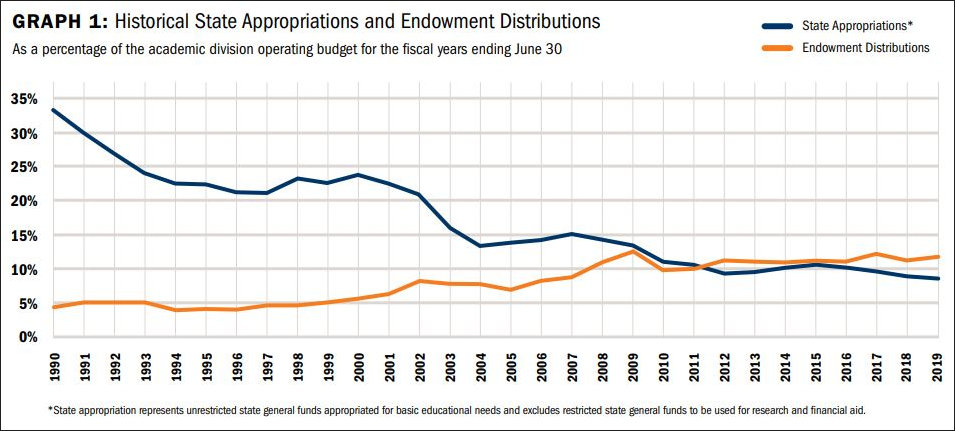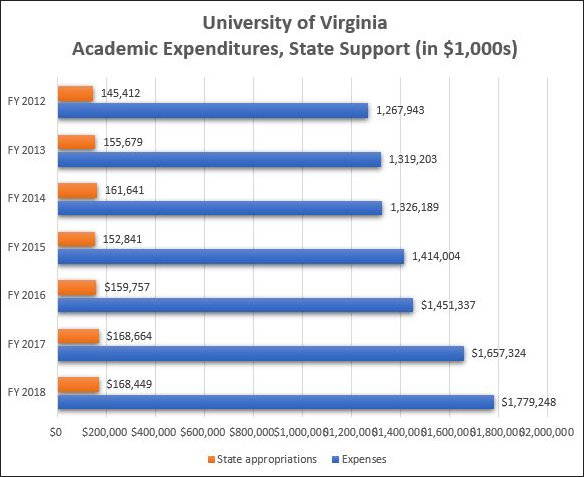
by James A. Bacon
Part of the University of Virginia’s fund-raising pitch to alumni and friends is to emphasize how donations help make up for cutbacks in state support for higher education. Here’s how the University of Virginia Investment Management Co. (UVIMCO) 2019 annual report frames the issue:
The University of Virginia’s endowment strength also provides the financial support and flexibility necessary when other revenue sources decline. Historically, the University relied heavily on appropriations from the Commonwealth of Virginia. however, in Virginia and many other states, macroeconomic changes and constrained state budgets in recent years have resulted in less revenue available for public education. Steadily declining state support means the University must rely on past and continued donor generosity to sustain its margin of excellence.
The graph above shows how state support, expressed as a percentage of the academic division operating budget (excluding the UVa hospital) has declined steadily over the years. However, as Samuel Clemons famously said, there are three kinds of lies: lies, damn lies, and statistics.
Here’s another graph, based on numbers pulled from the University of Virginia’s annual financial reports:
Believe it or not, state support for UVa, expressed in absolute dollars, increased 15.8% between FY 2012 and FY 2018. Yet state support declined as a percentage of academic expenditures. How can that be? Because academic expenditures surged 40.3% over the same period!
Let’s look at the numbers a different way. In terms of absolute dollars, state support increased by $20 million per year between FY 2014 and FY 2018. Academic spending increased by $511 million! The Commonwealth of Virginia literally could have doubled state support in FY 2018 and it would have offset only one third of the five-year spending increases.
UVa’s runaway spending is not the fault of the General Assembly. It’s the fault of the UVa administration and Board of Visitors whose grandiose ambitions outstrip the fiscal capacity of the state. Philanthropists and UVa alumni would do well to bear that in mind next time they get the sales pitch to donate mo’ money.
(Full disclosure regarding lies, damn lies, and statistics. I selected a period of time for purposes of comparison that would vividly illustrate my point. There is no disputing the fact that over a multi-decadal period, state support has declined as a percentage of academic expenditures because of actual funding cutbacks as well as spending increases. Still, the larger truth holds: Spending increases have dwarfed cutbacks in state funding.)


Leave a Reply
You must be logged in to post a comment.